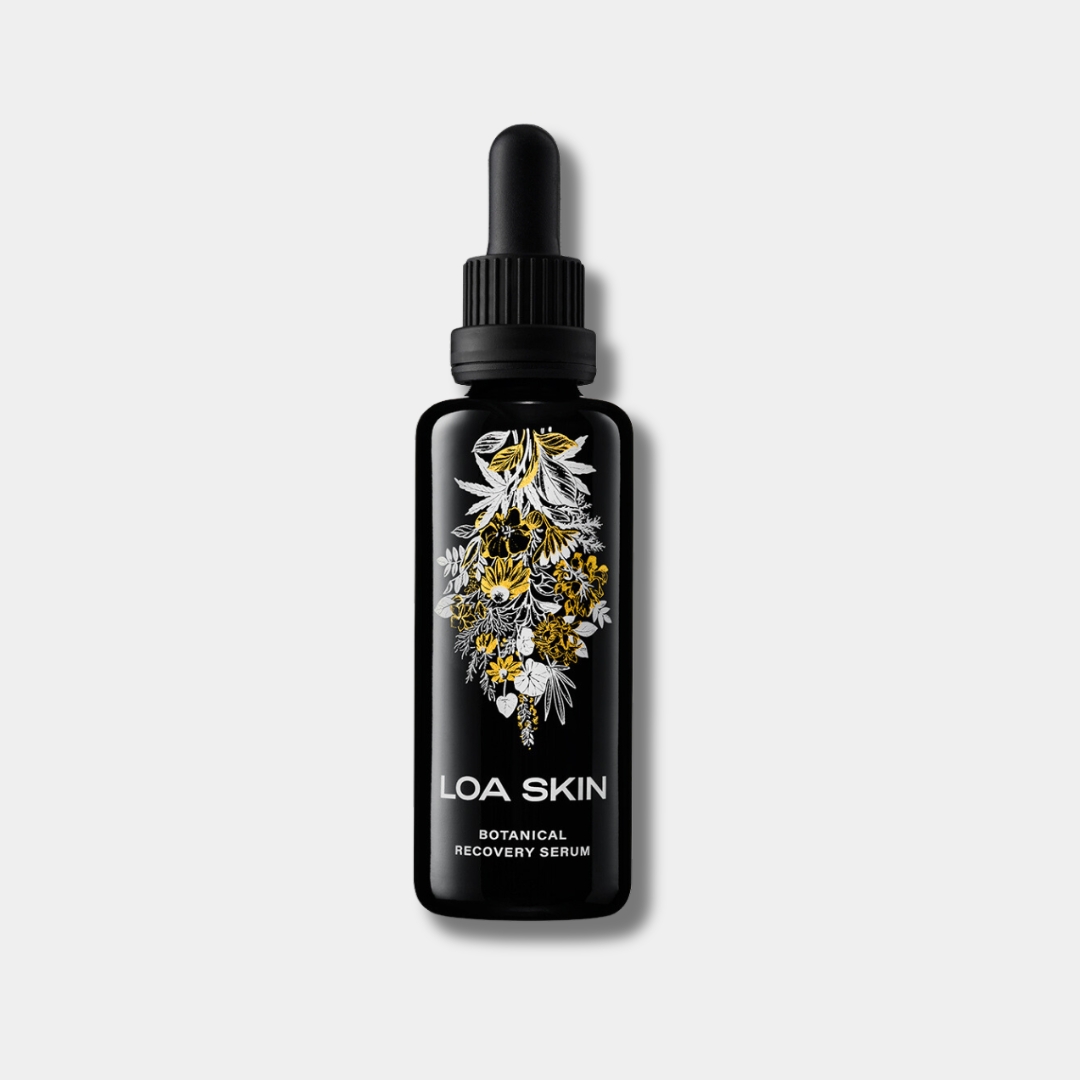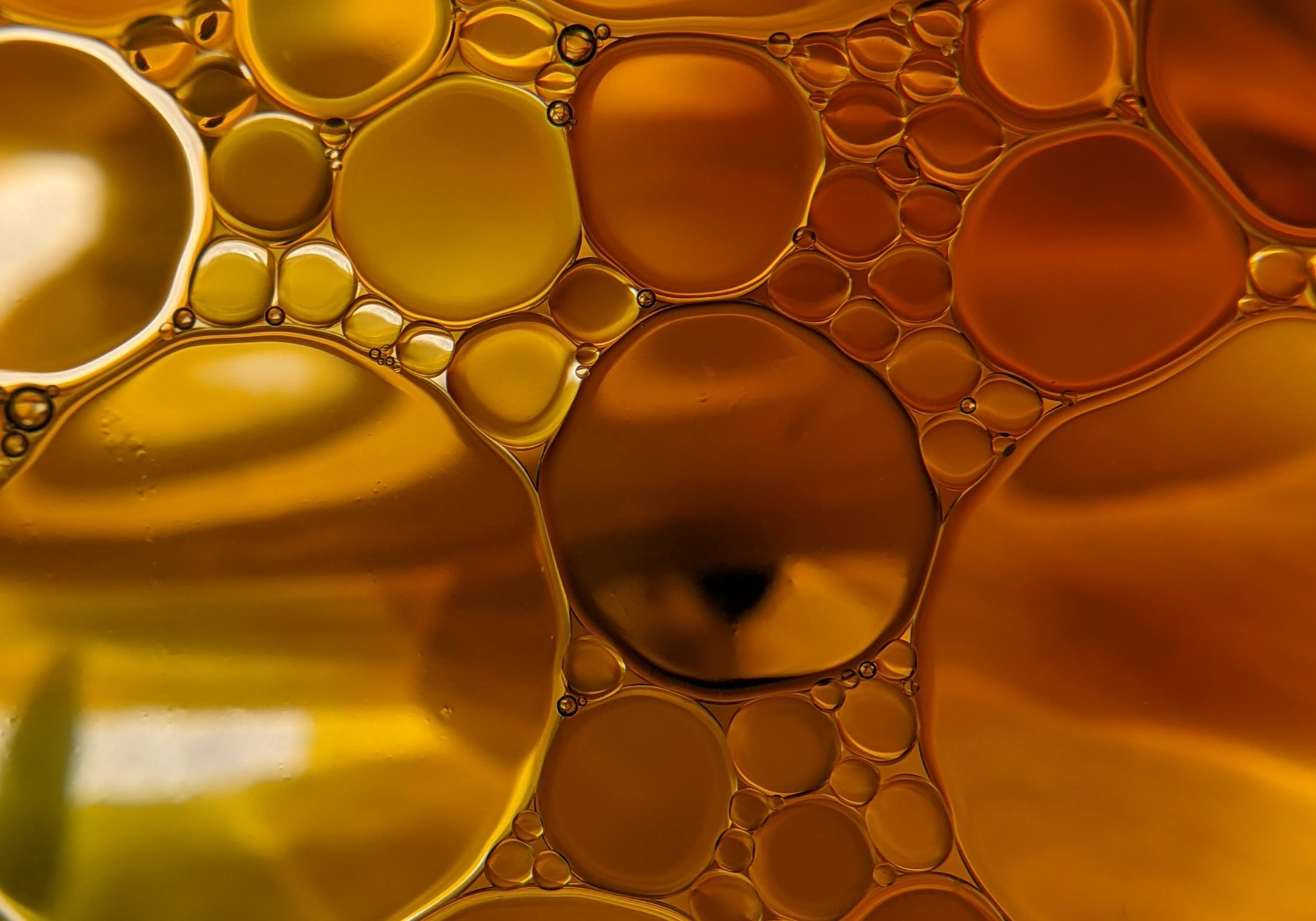
Gotu Kola: How It Targets Aging Skin & Inflammation
Gotu Kola is now recognized as an important ingredient for skin due to its long history of use and numerous scientific studies backing it.
It's found in both supplements and an array of skincare products, especially creams and oils. It’s even in our Botanical Recovery Serum, but what is gotu kola and how does it benefit aging skin and minimize inflammation?
What is Gotu Kola?

Centella asiatica, commonly known as Gotu Kola, Centella, or Tiger Grass, is a green medicinal herb in the parsley family. It is a small fan-shaped plant with green leaves and white or light pink flowers.
Native to wetlands in Asia, this herb has long been used for medicinal purposes in Traditional Chinese Medicine, Indonesian medicine, and Ayurveda. Historically, gotu kola has been used to treat wounds, syphilis, hepatitis, stomach ulcers, mental fatigue, epilepsy, diarrhea, fever, and even asthma (Sinai, 2021).
The leaves and stems of the gotu kola plant are used for medicinal and cosmetology purposes. For internal health issues, gotu kola leaves can be made into a tea and be ingested orally. For topical use on the skin, Gotu Kola extract is often processed into ointments, tinctures, or creams.
Gotu kola has been known for its multiple medicinal properties, but in modern culture it is widely used for its dermatological benefits due to how it greatly benefits the skin. The medicinal properties of gotu kola are mainly due to its high level of an active ingredient called triterpenoids, a phytochemical compound that can be further broken down into asiatic acid, madecassic acid, asiaticoside and madecassoside, all of which have direct benefits for the skin and assist with important repair functions.
Let’s get into the skin benefits of gotu kola!
What are the skin benefits to using Gotu Kola?
1. Gotu Kola has anti-inflammatory properties
Gotu kola has a high level of triterpenoids, specifically triterpenoid saponins which are active ingredients that can inhibit the infiltration of inflammatory cells. These triterpene compounds can be further broken down into asiatic acid, madecassic acid, asiaticoside and madecassoside, all of which contribute to wound healing (Bylka et al., 2013).
Furthermore, the triterpenoids found in gotu kola have been shown in studies to strengthen the skin, boost antioxidant activity in wounds, and increase blood supply to the area (Sinai, 2021). Triterpenoids help minimize inflammation due to their rich antioxidant activity, meaning that they actively fight off free radicals and toxins that cause oxidative stress on the body. Furthermore, the increased blood supply to the area carries off any damaging allergens or toxins.
2. Gotu Kola can decrease swelling and improve blood flow
Gotu kola is an emmenagogue, which means that the plant naturally increases blood flow within the body. Numerous clinical studies have shown that gotu kola has strong capabilities in increasing circulation and microcirculation within the capillaries, and subsequently reducing swelling (Pointel et al., 1987).
In a study of 94 people with venous insufficiency, those who took gotu kola saw their symptoms improve compared to those who took placebo (Pointel et al., 1987). The decrease in swelling was further supported with a recorded decrease in uric acid levels and lysosomal enzymes.
Increased blood circulation can lead to better skin health, as blood contains oxygen, proteins, and nutrients that skin cells need in order to work, heal, and flourish. Blood flow also carries away damaging free radicals and other waste products away from working cells.
3. Gotu Kola can stimulate collagen production
Studies have shown that the high levels of triterpenoids present in gotu kola stimulate type I collagen formation, which is the most abundant collagen found in connective tissues including skin, tendon, and bone tissue (Conn, 2012). Out of the triterpenoids, it is specifically Asiaticoside that has been reported to alter gene expression and induce the synthesis of type I collagen (Conn, 2012). Type I collagen production is what helps the healing of wounds and stimulate scar maturation.
The increase in Type I collagen production is also what assists with increasing the tensile strength of skin while maintaining skin elasticity, which provides anti-aging skin benefits. Further research has indicated that gotu kola can be used in the treatment of photoaging skin, cellulite and stretch marks (Bylka et al., 2013).
In a double blind clinical trial, 20 female participants that were 45-60 years old participated in a topical treatment of 0.1% madecassoside with 5% vitamin C. After 6-months of consistent use, the results were a significant improvement in firmness, elasticity and skin hydration which were confirmed with biometrological tests (Haftek et al, 2008).
4. Gotu Kola has wound-healing properties
With gotu kola’s anti-inflammatory properties and ability to stimulate blood flow and collagen and protein production, it is exceptionally great at helping the skin heal. The triterpenoids (specifically, Madecassoside and Asiaticoside) are able to increase the rate of wound contraction (from increased myofibroblast activity), stimulate angiogenesis (the formation of new blood vessels), and stimulate epithelialization (an essential part of wound healing) in burns, wounds, and surgical scars (Lu et al., 2014).
In another clinical trial, wounds treated with gotu kola extract showed an increase of fibroblast (connective tissue cells) proliferation by stimulation of cell migration from the surrounding tissues and the activation of growth factors in the wound (Maquart et al, 1999). The triterpenoid components were also able to stimulate glycosaminoglycans, a main component of connective tissue, along with hyaluronic acid synthesis.
With its exceptional wound-healing properties, ointments containing gotu kola are often used as a postoperative treatment to assist with wound healing and scar management.
When to Avoid Gotu Kola:
Gotu kola is also not recommended for children under 18 years of age. Although gotu kola has a host of internal and external medicinal benefits, the herb can also have some interactions with certain medications.
People who take prescription medications for diabetes, high cholesterol, diuretics or sedatives should also not ingest gotu kola. Those with liver disease, or who take medications that affect the liver, should also not take gotu kola.
If you are pregnant or breastfeeding, it is not advised to ingest gotu kola, as it may affect the menstrual cycle.
If you have concerns about introducing gotu kola into your diet or skincare routine, we strongly recommend that you consult with your healthcare provider.
References
Bonte, F., Dumas, M., Chaudagne, C., & Meybeck, A. (1994). Influence of Asiatic Acid, Madecassic Acid, and Asiaticoside on Human Collagen I Synthesis. Planta Medica, 60(02), 133–135. https://doi.org/10.1055/s-2006-959434
Brinkhaus, B., Lindner, M., Schuppan, D., & Hahn, E. G. (2000). Chemical, pharmacological and clinical profile of the East Asian medical plant Centella asiatica. Phytomedicine, 7(5), 427–448. https://doi.org/10.1016/s0944-7113(00)80065-3
Bylka, W., Znajdek-Awiżeń, P., Studzińska-Sroka, E., & Brzezińska, M. (2013). Centella asiatica in cosmetology. Postepy dermatologii i alergologii, 30(1), 46–49. https://doi.org/10.5114/pdia.2013.33378
Chong N.J., Aziz Z. A Systematic Review of the Efficacy of Centella asiatica for Improvement of the Signs and Symptoms of Chronic Venous Insufficiency. Evid. Based Complement. Altern. Med. 2013;2013:627182. doi: 10.1155/2013/627182
Conn, P. M. (2012). In Imaging and spectroscopic analysis of living cells. Essay, Elsevier/Academic Press.
Haftek, M., Mac-Mary, S., Le Bitoux, M. A., Creidi, P., Seité, S., Rougier, A., & Humbert, P. (2008). Clinical, biometric and structural evaluation of the long-term effects of a topical treatment with ascorbic acid and madecassoside in photoaged human skin. Experimental dermatology, 17(11), 946–952. https://doi.org/10.1111/j.1600-0625.2008.00732.x
Lu, L., Ying, K., Wei, S., Liu, Y., Lin, H., & Mao, Y. (2004). Dermal fibroblast-associated gene induction by asiaticoside shown in vitro by DNA microarray analysis. The British journal of dermatology, 151(3), 571–578. https://doi.org/10.1111/j.1365-2133.2004.06146.x
Maquart FX, Chastang F, Simeon A, et al. Triterpenes from Centella asiatica stimulate extracellular matrix accumulation in rat experimental wounds. Eur J Dermatol. 1999;9:289–96.
Sinai, M. (2021). Gotu kola. Mount Sinai Health System. https://www.mountsinai.org/health-library/herb/gotu-kola.
Widgerow, A., Chait, L., Stals, R. et al. New Innovations in Scar Management. Aesth. Plast. Surg. 24, 227–234 (2000). https://doi.org/10.1007/s002660010038











Leave a comment
This site is protected by reCAPTCHA and the Google Privacy Policy and Terms of Service apply.